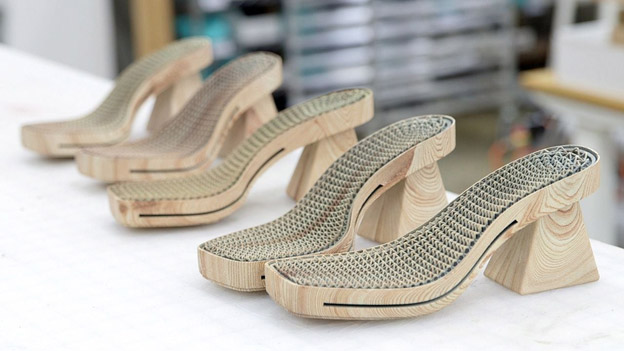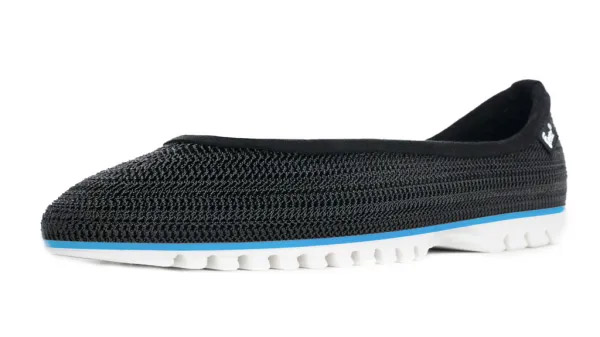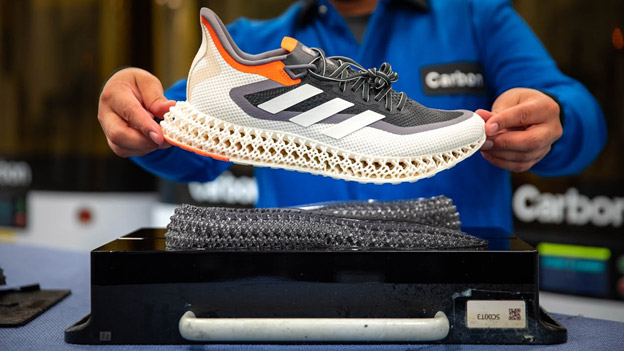The world of footwear is changing rapidly, and 3D printing has been identified as a key technology that will play a significant role in its future. From customization to sustainability, new applications of 3D printed shoes are being explored by leading footwear companies and start-ups globally.
In this insight article by AM Chronicle, we explore the various facts of how 3D printing is transforming the world of footwear, from consumer adoption and market trends to medical applications and the exciting future of 3D-printed shoes.
Table of Contents
Consumer Adoption and Market Trends
Consumer preferences and market trends are key drivers in the footwear industry. The Global 3D Printed Footwear Market is valued at USD 993.22 Million in 2022 and is projected to reach a value of USD 3758.75 Million by 2030 (Source). North America is expected to be the largest regional market for 3D printed footwear, followed by Europe and Asia Pacific.
In recent years around 15% of the U.S. youth population prefer 3D Printed Footwear Market for better lifestyle and comfort. Major players such as Adidas and Nike are investing heavily in the research and development of 3D Printed Footwear Market. The most comment technique used in developing these footwear is AM hardware units and in 2025 this technology is expected to generate revenue up to USD 5,500 million (Source).
Customization and Personalization through 3D Printing in Footwear
With 3D printing, consumers can create shoes that are perfectly tailored to their individual needs and preferences, taking into account their unique foot shapes, gaits, and style preferences. 3D printed shoes can be made to fit a person’s feet exactly, eliminating the common problems of ill-fitting shoes, such as blisters, pain, and poor performance.
It also allows for the creation of shoes with specific performance characteristics, such as improved cushioning, support, and flexibility. Additionally, empowers consumers to express their individuality by creating shoes with unique designs, colors, and patterns.
The starting point for creating custom 3D printed shoes is to scan the individual’s feet using a 3D scanner. This creates a precise digital model of the feet, capturing their unique shape and contours. The 3D scan data is then used to create a 3D model of the shoe. This model can be customized in various ways, such as adjusting the fit, adding arch support, or incorporating unique design elements. Once the 3D model is finalized, it is sent to a 3D printer, which builds the shoe layer by layer using a variety of materials, such as plastic, nylon, or TPU (thermoplastic polyurethane).
Sustainable Footwear Manufacturing Using 3D Printing Technology
Sustainable footwear manufacturing is a growing trend in the footwear industry, as companies and consumers alike become more aware of the environmental impact of footwear production. One of the most promising technologies for sustainable footwear manufacturing is 3D printing.
In the 3D printing process products are built up layer by layer, rather than being cut from a solid block of material. This reduces waste significantly, as there are no scraps or offcuts. 3D printing is more energy-efficient than traditional manufacturing processes, such as injection molding. This is because 3D printers only heat up the material that is being printed, rather than heating the entire mold. 3D printing allows for on-demand production of footwear.
This means that shoes can be printed as needed, rather than being produced in large batches and then stored in warehouses. This reduces inventory waste and transportation emissions. Additionally, it can be used to print footwear from a variety of sustainable materials, such as recycled plastics, bio-based materials, and even algae.
Zellerfeld is a German footwear company that produces custom-made 3D printed shoes from recycled materials. Zellerfeld’s shoes are made to order, which reduces inventory waste. The company also offers a recycling program for its shoes, so that customers can return their old shoes to be recycled into new ones.

Hilos is a Spanish company that produces 3D printed shoe soles from recycled materials. Hilos’ soles are designed to be lightweight and durable, and they can be recycled at the end of their life. Hilos partners with footwear brands to offer its soles on their shoes.

Feetz is an American footwear company that produces 3D printed custom-made insoles. Feetz’s insoles are made to order, which ensures a perfect fit and reduces waste. The company also uses recycled materials to produce its insoles.

As 3D printing technology continues to develop and become more affordable, we can expect to see more and more footwear companies using 3D printing to produce sustainable shoes.
Step into the Future of Footwear at AMTECH – Additive Manufacturing Expo 2023.
Discover the latest trends in the Additive Manufacturing industry with 3D Printing in Footwear.
Check out the impressive display zone showcasing samples of 3D-printed footwear that are setting new benchmarks in style, comfort, and innovation. Network with 3D printing experts, visionary designers, and forward-thinking business owners who are redefining the footwear industry.
Join us at AMTech Expo and be part of the revolution in footwear technology on 1-2 December 2023 at Hitex Exhibition Centre, Hyderabad. Register and get your e-badge today
Medical Applications of 3D-Printed Footwear
Foot health is a priority for many individuals, and 3D printing is making a significant impact in this area. 3D-printed footwear has a number of potential medical applications such as Custom-made orthotics, Prosthetic footwear, Diabetic footwear & Footwear for children with special needs.
3D-printed orthotics can be made to perfectly fit the patient’s foot, providing support and cushioning to relieve pain and improve mobility. Orthotics can be used to treat a variety of conditions, including plantar fasciitis, heel spurs, and bunions. 3D-printed prosthetic footwear can be created to match the patient’s residual limb precisely, providing a comfortable and functional fit. 3D-printed prosthetic footwear can be more affordable and easier to customize than traditional prosthetic footwear. 3D-printed diabetic footwear can be designed to protect the foot from pressure sores and other complications of diabetes.

3D-printed diabetic footwear can be made with soft, cushioning materials and customized to fit the patient’s individual needs. 3D-printed footwear can be created to address the specific needs of children with special conditions, such as cerebral palsy and spina bifida. 3D-printed footwear can help to improve the child’s gait, balance, and posture.
In addition to these specific applications, 3D-printed footwear can also be used to create more comfortable and supportive footwear for people with a variety of foot conditions, such as flat feet, high arches, and wide feet.

Shriners Hospitals for Children is using 3D-printed footwear to create custom prosthetics and orthotics for its patients. This helps the hospital to provide correct solution to patients and reduce inventory. As 3D printing technology continues to develop and become more affordable, we can expect to see even more innovative and effective medical applications for 3D-printed footwear.
Conclusion
The future of footwear is taking a remarkable turn with 3D printing. From consumer preferences and sustainability to design innovation and medical applications, 3D-printed shoes are stepping into the mainstream. With various successful case studies it’s clear that this technology is here to stay, changing the way we walk, run, and live.


